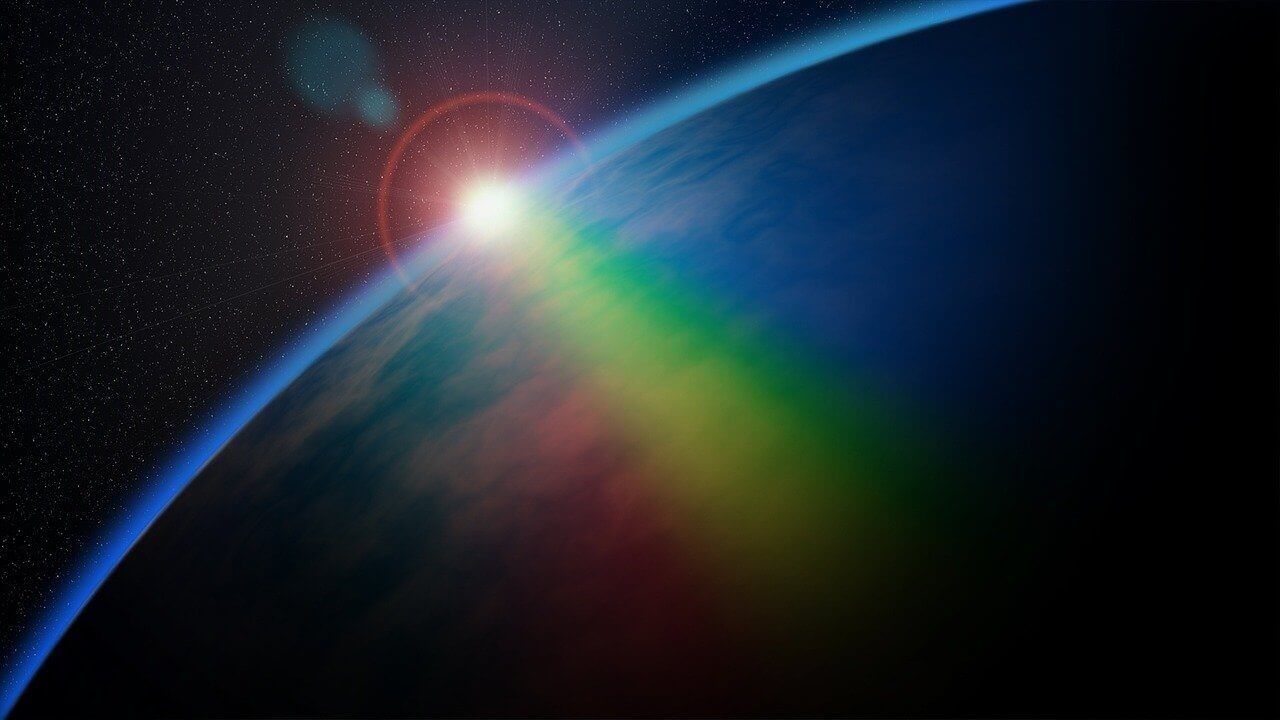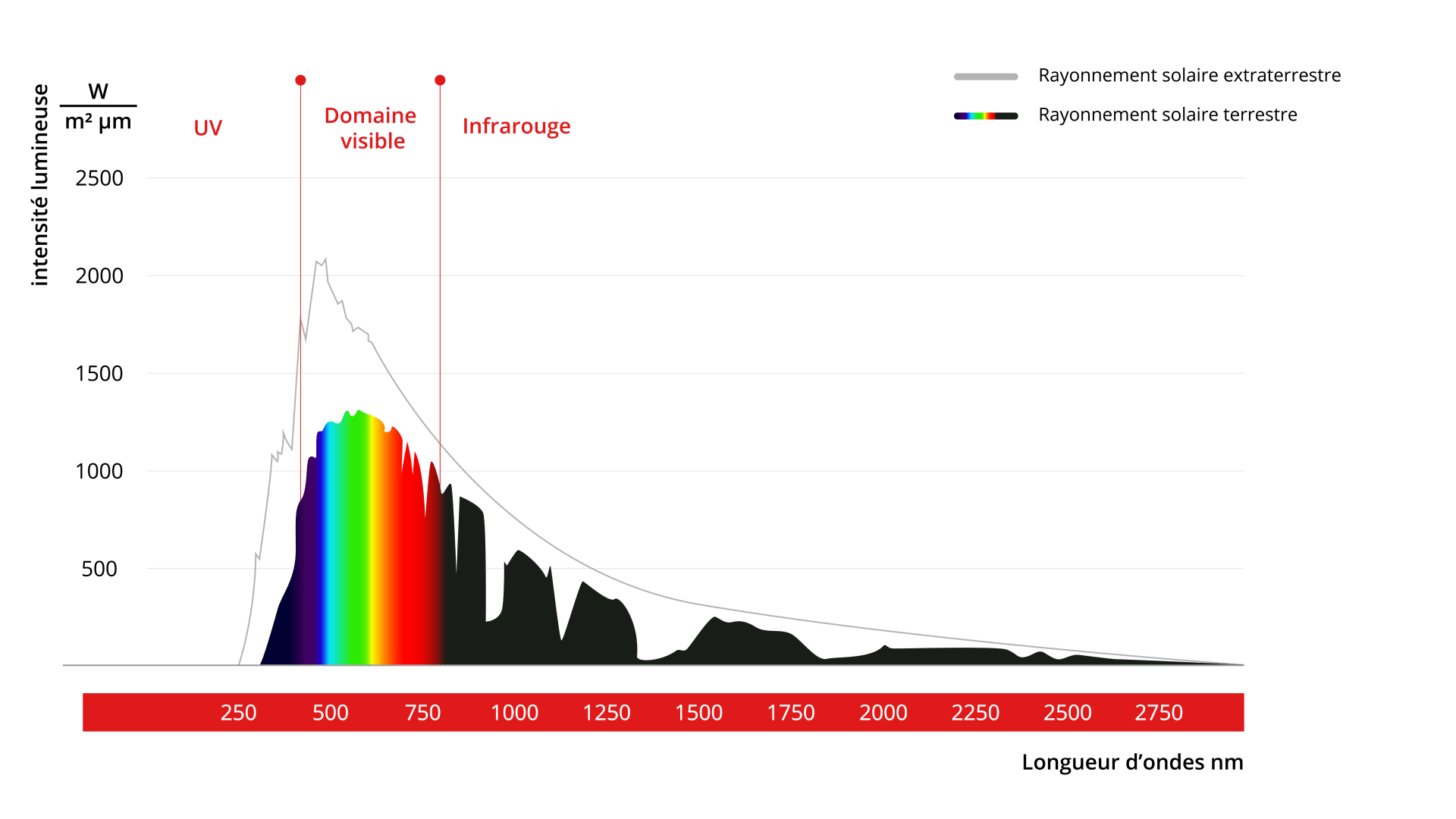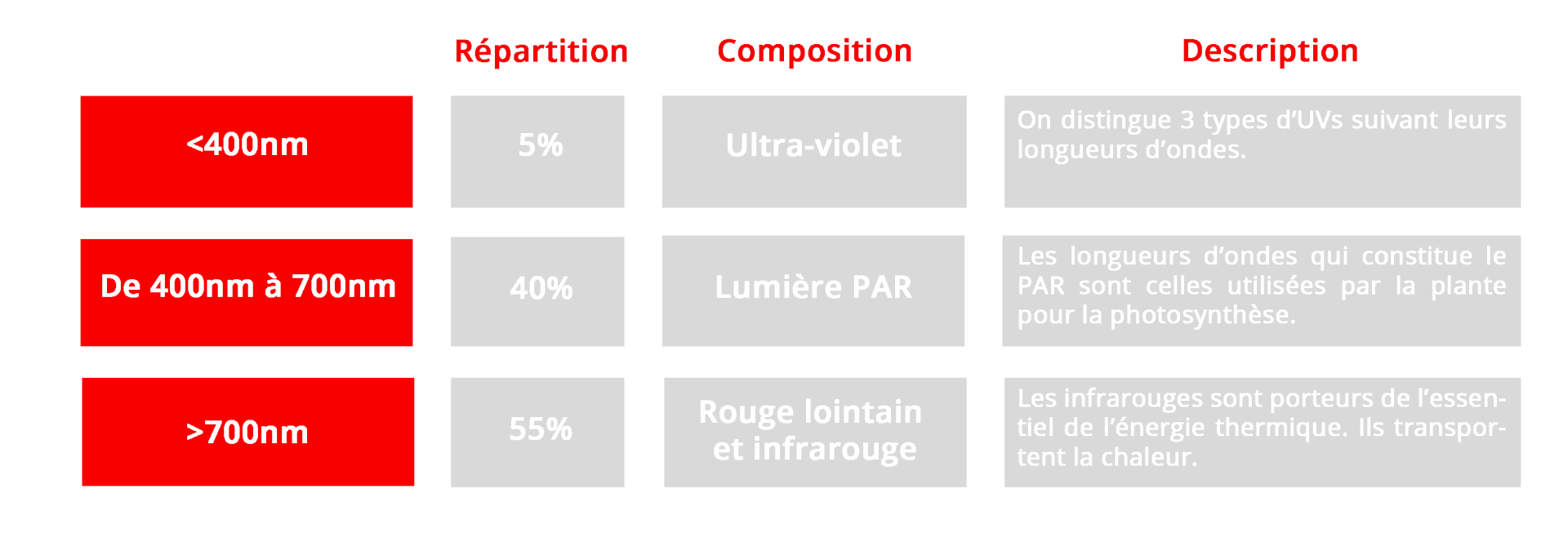
Solar Light for Horticulture (1/3): The Basics
Our dossier on sunlight is in three parts. In the first part, we explain the principles of solar radiation.
14 November 2023
The sun and its light spectrum
The sun is a mass of fused gases that emits particles called photons in vast quantities. These photons represent light energy that radiates at the speed of light. This is solar radiation. The solar spectrum represents the radiation emitted by all the fused gases.
Measurement devices
The power of radiation is measured using a pyranometer in W/m². It is sensitive in a spectral range of 300 to 2,500 nm. It is commonly used at the top of a greenhouse to determine the available light intensity for cultivation.
To decompose a light beam and extract its spectrum, a spectroradiometer is used. It typically analyzes wavelengths from 300 to 1,000 nm. In a greenhouse, it allows for understanding the light intensity distributed to plants for each wavelength.
Solar spectrum composition
The theoretical radiation of our sun is as follows :

Thus, at the surface of the Earth, solar radiation is composed of ultraviolet, visible light and infrared distributed as follows:

When measuring solar radiation, the result obtained is the sum of thermal radiation and light radiation. Solar radiation is composed of 40% light and 60% heat.
In general, the solar spectrum is comparable to that of a 5,800 K light. You can find our article on Kelvin HERE.
This spectrum suggests a fixed composition of sunlight, yet we observe daily that sunlight varies. This light changes depending on the location, season, weather and time of day.
In our next article, we will decipher the variations in the solar spectrum perceived on earth.

